Frequent contributor Wallace Wyss wrote to me “Ford has generously posted some pictures on the net of clay models of GT40s so I wanted to write about the trials and tribulations of the first year of the GT40. They show how laughably naive Ford was about aerodynamics.”
Mike Gulett, Editor
by Wallace Wyss –
The way the Ford GT of the ’60s started out, it’ a wonder they won Le Mans only four years later. The problem was not only in the mechanicals but in styling. They had never built 200 mph cars before. It was like telling pilots of P51 Mustangs who arrived in Korea “Oh, yeah, by the way the enemy will be in jets.”
Part of the problem was that the mid-engined concept car called Mustang I worked just fine though it had an upsweeping nose. Dan Gurney even drove it at some event just for the crowd, not a race. So Ford thought fine, we got a race car. But when they went to design a race car, that upswept nose was to bedevil them no end.
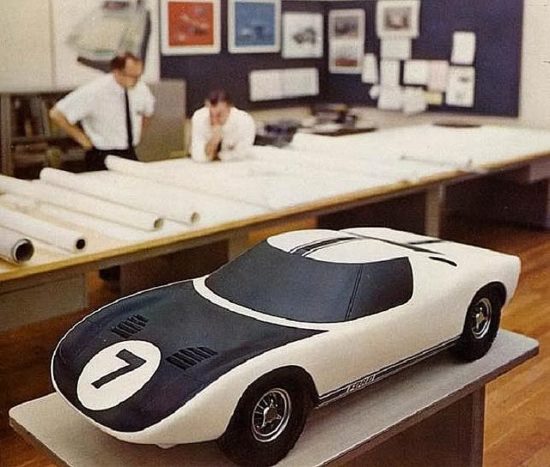
This scale model, maybe 3/8s, was used as office decor once the program got going. Wonder how much it would sell for today? In the movie Ford v. Ferrari, this is pretty representative of the way the ’64 they had on screen looked.
Part of the problem was that they were testing 3/8ths scale models at 125 mph and extrapolating to 200 mph. But their calculations were off. One road tester–Sir John Whitmore–put it into the trees. The car was totaled but it was a testimony to the integrity of the car that he walked out of the forest.
Ford did the chassis design in Dearborn. They rejected chief engineer Roy Lunn’s idea of a tubular bar space frame like the Mustang I and went for a unitized tub like the Lola GT they had bought from Eric Broadley, founder of Lola, in the UK. Some speculate because Ford tested them, Ford copied them but they just used them for testing the engine, trans and some suspension parts.
Ford should have bought all three Lola GTs but when one Ford buyer was overheard saying “where is that fat ____” the Texas millionaire who owned it, overheard them and refused to sell his to them and Ford ended up racing their first GT40s against it.
WRONG ENGINE
As far as an engine, they thought they made the right choice, a 256 (downsized from a 260) but in this case an aluminum block, the same one used in the Indy car, where they won (so they had a certain amount of confidence that they could jump into a big event and win). They used overhead valves though instead of overhead cams. And a dry sump (engine oil in separate tank).
WRONG GEARBOX
And for a gearbox, that was a bad decision, they chose an Italian gearbox, a Coletti, used in some Italian race cars but it was a choice that caused them a lot of grief. They also chose to run wire wheels, again an almost fatal mistake. Why do I say that? Because though Ferrari used them in ’63, they were already judged obsolete by Ferrari around ’64 because they snapped spokes under heavy side loads.
The body panels were steel with fiberglass panels here and there. They were made in England–in fact the whole chassis was farmed out to Abbey Panels in England which leads some to say it was an English car but I say forget that, the customer was in Dearborn, MI USA (though oddly Ford has to pay customs duty when they entered. They actually destroyed GT40s later rather than pay the duties).
TIMING IS EVERYTHING
Ford was building the first prototypes and needed every minute for testing. So what did they do? When a big auto show came up they took one out of testing and sent it to the show. Oh, sure they got good publicity but when the car broke later they regretted that it was not fully tested.
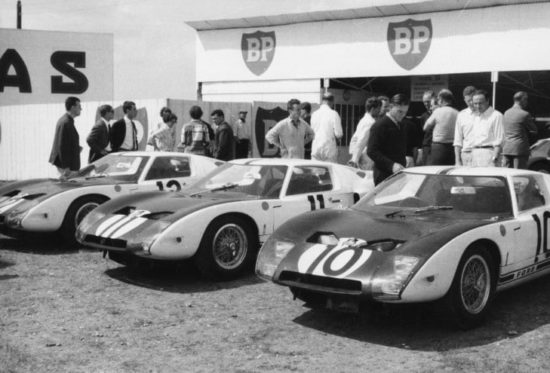
When Ford took their first three GTs to France in April 1964 to test, it was a rude awakening because the cars had nasty nose lift, and not enough air was getting to the radiator. So they cut (or like ripped open) some of the leading edge of the nose to get air in, and kept making the front hood vents larger. All this shows that wind tunnel testing only goes so far, you have to get out on the track you will be racing on and push it until something breaks.
The brakes were bad (they got so hot the discs lit up red when they were out on the track) so the drivers did a lot of downshifting which is when the Colotti showed it was a piece of crap. Ford had Shelby test it and at one point Ford redesigned more than 25 parts to make it last longer. The Germans had a good gearbox, the ZF but it wouldn’t be ready until 1965.
You can tell by the pictures shot at Le Mans during testing in ’64 it looks like they took a can opener to the nose of all three and ripped it open to get air in (or was it to get air out?) It was then they resigned the hood air vents, making vents that started out the bottom of the radiator and went up to the top of the hood and exited the hot air.
The unique bucket seats with little holes to provide cooling air never worked as rear end ventilators but at least they were comfortable. The rear end got quite a bit of redesign. Originally there were small little grates while it was a clay model. But once it got on the track they saw they needed a LOT more cooling so they kept making them bigger.
SPOILER ALERT
And then there’s the rear spoiler. Originally not only did they have nose lift (Shelby solved a lot of that in ’65) but tail lift as well. So Ritchie Ginther, a freckle faced California race driver who had worked in an aircraft factory earlier told them why not add a spoiler and they added a spoiler lip to the rear to keep the tail on the ground.
They persisted with the alloy block through most of the season but it couldn’t take Le Mans-like running so toward the end they switched to 289s. After all if they were good enough for the Cobras, why not the GT40? They even went wet sump.
During the ’64 season, they entered ten races with the ’64 GT40s and did not finish every time. But to their credit they did not lament “We can never catch Ferrari.” They transferred John Wyer who had been hired because his Aston Martin team won Le Mans in’59 over to their shop in the UK to build GT40 street cars. Then they did what they should have done in ’64–put Carroll Shelby onto the task of making this loser into a winner. He was already on their payroll anyway.
He shaped it up and Ford won Le Mans but it was a long long road to victory…
Let us know what you think in the Comments.
THE AUTHOR/ARTIST: Wallace Wyss is the co-author of the book Ford GT40 and the New Ford GT (the “new” referring to the ’05-06). He has copies of this book, autographed by him, available with an 11″ x 17″ print of his 1964 GT40 painting. For price write malibucarart@gmail.com

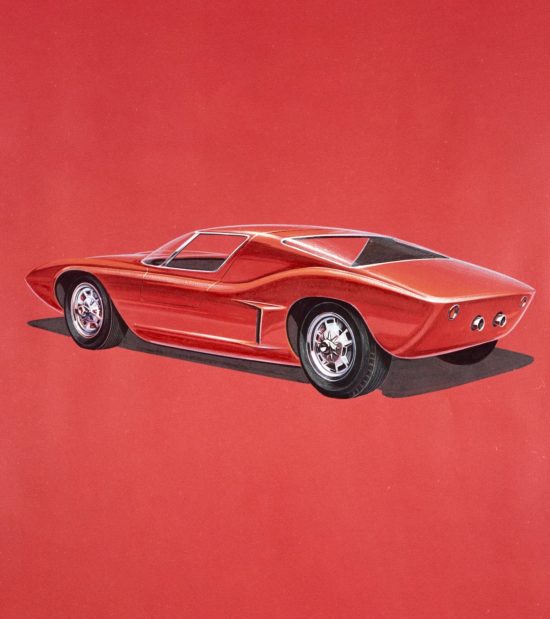
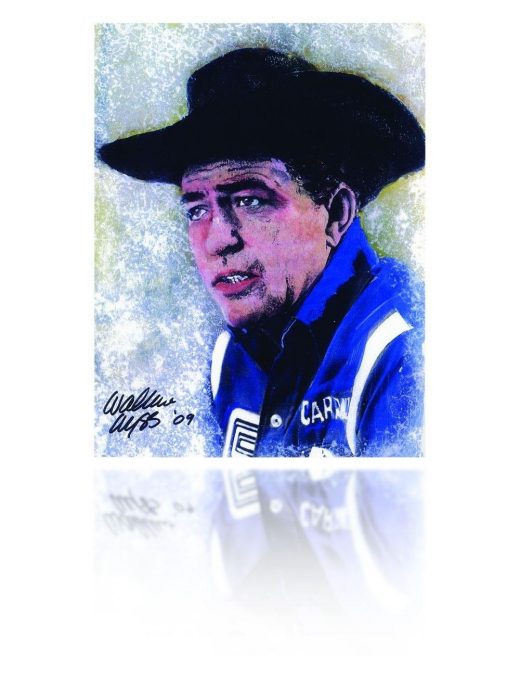
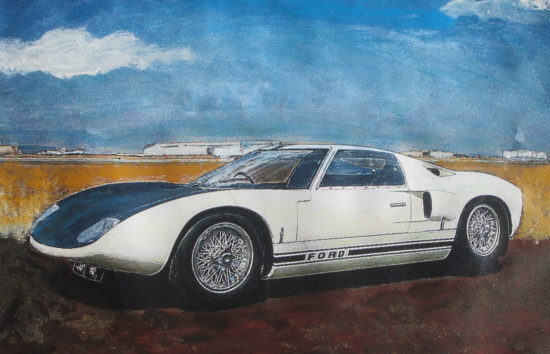
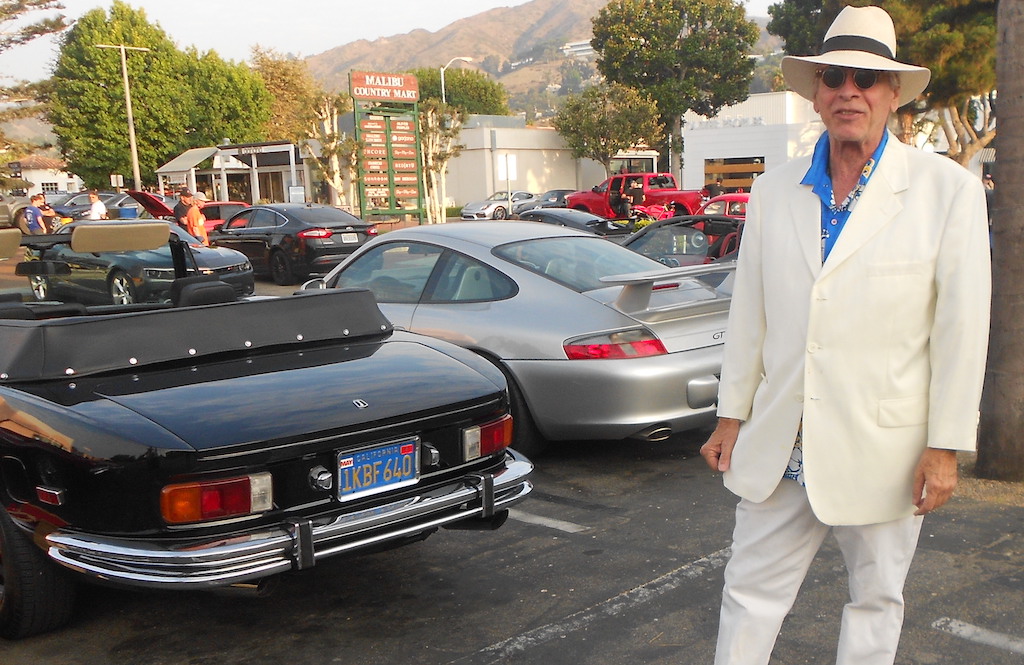

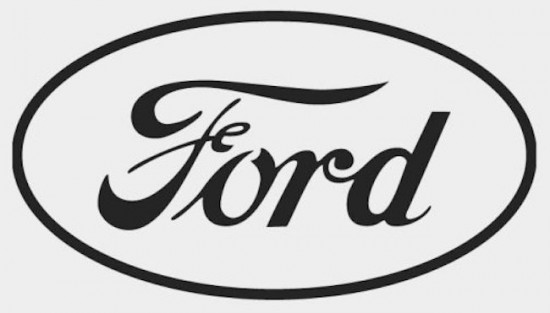


Having been an industrial designer, I have to admit that they sometimes amaze me. How could anyone look at that clay model and not visualize it taking flight? And it wasn’t just the Ford guys, over at Chevy they were doing the same thing with the Sting Ray. The ID curriculum could benefit by adding, if not an engineering class or two, maybe a couple of sessions in common sense.